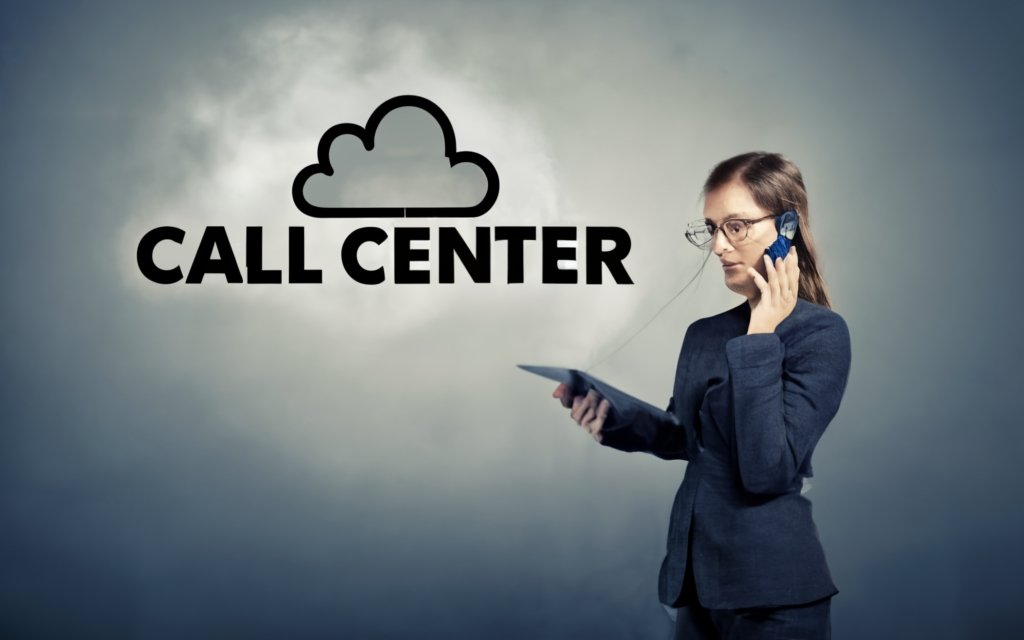The future of customer engagement is in the cloud. Read on as we lift the curtain on everything you need to know about cloud call centers – from intelligent routing tools to omnichannel capabilities and the path ahead with AI. This essential guide takes you inside the virtual contact center revolution to reveal how leading platforms are transforming operations, experiences, and results.
Overview of Cloud Call Centers
Cloud call centers are becoming the new normal for modern businesses. But what exactly are they, and how do they differ from traditional on-premise call centers? This section will cover the key things you need to know.
What Are Cloud Call Centers?
A cloud call center is a call center solution that is hosted in the cloud and accessed over the internet, rather than running on physical on-site hardware. The key components of a cloud call center include:
- Virtual PBX system – The PBX (private branch exchange) system that routes calls is hosted in the cloud, eliminating the need for bulky on-premise equipment.
- Software as a Service (SaaS) – The call center software runs in the cloud and agents access it via web browsers instead of installed programs. This makes it easily accessible from anywhere.
- Automatic call distribution – Incoming calls are automatically distributed to agents according to configurable rules like skills-based routing.
- Features and integrations – Cloud platforms offer full suites of call center features and seamless integration with CRMs, help desk tools, and more.
- Flexible scaling – Agent capacity can be scaled up or down on demand, since there is no physical equipment involved.
- Usage-based pricing – Companies only pay for what they use instead of purchasing hardware upfront, making costs variable instead of fixed.
In short, cloud call centers run entirely on hosted, web-based software, with no need for on-site private branch exchange (PBX) systems.
Key Benefits of Cloud Call Centers
There are many compelling benefits that are driving more businesses to adopt cloud-based call center solutions:
- Cost savings – No expensive hardware to purchase and maintain on-premises. Usage-based pricing adjusts costs to your needs.
- Scalability – Agent capacity can be flexibly scaled up for seasonal spikes and down for lulls. No need to purchase new systems.
- Business continuity – Agents can keep working remotely even if natural disasters or events disrupt physical facilities.
- Increased flexibility – Agents aren’t tied to physical call center locations. Virtual call centers enable remote work and use of freelancers.
- Faster deployment – New call center sites can be spun up in days without installation delays. Rapidly adapt to changing business needs.
- Access to latest features – Cloud platforms are constantly updated with new features, IVR menus, integrations etc. No manual software upgrades needed.
- Mobile capabilities – Agents can make/take calls via web browsers or mobile apps from anywhere instead of fixed desk phones.
For most modern businesses, the pros heavily outweigh any cons and are fueling the rise of cloud-based contact centers.
How Do Cloud Call Centers Work?
The workings of a cloud call center might seem complex, but the overall workflow is straightforward:
- A customer calls your business’ virtual phone number, provisioned in the cloud PBX system.
- The incoming call is routed over the internet to the cloud call center platform.
- Call center software automatically distributes the call to an appropriate available agent using preconfigured rules.
- The agent receives the call on their headset, desktop IP phone, or mobile device.
- Call data like duration, recordings, notes, etc. are captured within the platform or integrated CRM.
- If the customer calls back, their history and data are quickly accessible to any agent that handles the call.
- Managers have access to analytic dashboards and reports providing insights into their contact center operations.
Built-in redundancy across globally distributed data centers ensures reliability, and capacity can be easily adjusted via the cloud platform.
How Cloud Contact Centers Differ from On-Premise
Traditional on-premise call centers rely on PBX equipment installed physically in the call center location. While they were the norm in the past, cloud-based call centers differ in some key ways:
- Hardware – No need for costly PBX systems and desk phones, replaced by software and IP phones/headsets.
- Deployment time – Cloud systems can be up and running in days or weeks vs. months for on-premises.
- Scaling – Scaling the number of agents is fast and flexible vs. limited by PBX capacity.
- Accessibility – Agents aren’t geographically limited and can even work from home.
- Resilience – Cloud network uptime and redundancy provide higher resilience.
- Maintenance – No hands-on maintenance of hardware needed with cloud systems.
- Updates – Platforms are seamlessly updated by the provider vs. manual updates.
- Cost structure – Usage-based OPEX vs. high CAPEX costs for on-premises.
While legacy systems still work for some large enterprises, most businesses are now finding the benefits of transitioning to cloud-based call centers highly compelling. The lower costs, flexibility, scalability, and resilience offered by modern cloud platforms make them the clear way of the future for call centers of all sizes.

Top Features and Tools of Cloud Call Center Software
Cloud-based call centers provide a vast range of tools and capabilities beyond what traditional on-premise systems can offer. Many of these features utilize advanced voice over IP (VoIP) technologies and leverage the flexibility of the cloud. Here are some of the most important features and tools to look for when evaluating cloud contact center platforms.
Call Routing and Distribution
One of the core strengths of cloud call centers is intelligent call routing and distribution. This allows incoming calls to be sent to the right agents or departments quickly and efficiently.
Skills-Based Routing
Skills-based routing uses configured criteria to connect each caller to the agent best suited to handle their needs. Common criteria can include:
- Language skills – Route Spanish calls to Spanish-speaking agents.
- Product expertise – Send technical support calls to agents with that product knowledge.
- Location – Connect callers to agents located in the same region.
This ensures customers get their issues resolved quickly by speaking with rep who have the ideal skills and experience for their needs.
Time and Priority-Based Routing
Cloud platforms make it easy to set up rules for routing calls differently based on time of day, day of week, or other criteria. Examples include:
- Send calls to a support queue during business hours and to an after-hours IVR menu outside of operating times.
- Route calls from VIP customers to the front of the queue or directly to account reps.
- Overflow calls past a certain threshold to remote freelancers or outsourced teams.
- Customize holiday-specific call flows, such as connecting to an emergency team on holidays.
Prioritization rules are especially useful for meeting SLAs (service level agreements) for premium customers. Time-based routing helps manage call volumes for optimized staffing.
Omnichannel Routing
Omnichannel routing means calls can be seamlessly transitioned between channels like voice, email, live chat, SMS/texting, social media, and more. For example:
- An email inquiry could be turned into a click-to-call conversation at the click of a button.
- A phone call could be transferred to an agent’s chat window if needed.
- Voice calls, texts, and chat sessions are automatically logged for a unified view of each customer.
This ability to engage customers across their channel of choice results in more personalized and satisfying experiences.
Interactive Voice Response (IVR) Systems
Interactive voice response (IVR) systems allow customers to interact with an automated menu by pressing numbers or speaking verbal commands. IVRs enable:
Self-Service Options for Customers
Many common customer needs can be addressed without speaking to a live agent, via options like:
- Checking an order status
- Reseting a password
- Checking store hours
- Rescheduling a delivery
This provides customers with quick, 24/7 self-service while reducing repetitive calls handled by agents.
Gathering Customer Info to Route Calls
IVRs also gather useful info from callers upfront through menu selections or verbal responses, such as:
- Account numbers for account lookup
- Purpose of the call
- Preferred language
- Priority level
This information can then be used to route the call to the ideal agent.
Well-designed IVRs streamline call routing and offload common requests, improving satisfaction for both customers and agents.
Call Monitoring and Recording
Recording and monitoring calls has become a standard practice for quality assurance, compliance, and training. Cloud platforms make this seamless with:
Improving Customer Service and Agent Training
Recorded calls provide a wealth of data for optimizing customer experiences, such as:
- Identifying common pain points that need better solutions
- Coaching agents on better communication practices
- Standardizing processes across support teams
- Resolving customer disputes or complaints
Ensuring Compliance
Call recording is also crucial for regulated industries to meet compliance standards for financial transactions, healthcare data, and other sensitive activities over the phone. Cloud recording makes accessing and reviewing past calls simple from anywhere.
The flexible storage capacities of the cloud enable recording all calls while meeting data retention policies.
CRM and Business Tools Integration
Without the right context, your agents are flying blind. Tight integration with CRMs and business apps provides critical customer data:
Contextual Data for Agents
When a customer calls in, integrations automatically fetch relevant information like:
- Full customer records
- Order history and tracking data
- Support ticket activity
- Product usage details
- Conversation history across channels
By automatically surfacing contextual data, your team can deliver personalized, seamless experiences.
Auto Logging of Call Data
Conversely, key call details are automatically logged within customer records and tools like help desk platforms for future reference:
- Call transcripts, recordings, and notes
- Issues, requests, or complaints
- Follow-up actions needed
- Customer satisfaction scores
This closes the loop to enable continuous improvements in customer service.
Collaboration Tools
With remote teams and shifting schedules, agents need help from coworkers to handle complex issues. Collaboration features facilitate teamwork:
Team Chat
In-platform chat tools allow agents to efficiently ask questions and share info during or between calls, without relying on external apps. This leads to quicker call resolution.
Call Barging
Managers can “barge in” on calls by entering conversations in listen-only or coach modes. This on-call mentoring helps guide less experienced reps.
Call Whisper
Related to barging, whisper allows managers to speak directly to agents without the customer hearing during a live call. Whispering provides quick assistance for agents to close difficult calls.
Collaborative cloud call center platforms enable agents to tap into collective knowledge for better first-call resolutions.
Customizable Dashboards and Analytics
Making data-driven decisions requires drilling into historical and real-time data. Cloud call centers deliver deep insights through:
Real-Time Reporting
Live dashboards show volumes, wait times, agent status, and other key metrics as they unfold. Managers can rapidly respond to issues and adjust staffing.
Historical Reporting
Granular reports provide analysis of past periods, such as:
- Peak calling times and seasonality
- Average talk and hold times
- Call volume by queue, campaign, or product
- Agent utilization and performance
- Customer satisfaction trends
These details inform improvements in processes, staffing, and training.
Tracking Individual and Team Performance
Call center analytics also spotlight successes and gaps in individual or team productivity:
- First-call resolution rates highlight training needs
- Conversion rates help optimize sales processes
- Customer surveys give agents feedback to improve
- Leaderboards inspire friendly performance competition
The insights unlocked with cloud call center analytics are invaluable for optimizing operations.
Integration with AI
Artificial intelligence incorporates technologies like machine learning and natural language processing to enable automated interactions. Key AI capabilities in call centers include:
Chatbots
Pre-recorded chatbots or text-based conversational bots can handle common inquiries, routing callers to agents when needed. This provides 24/7 automated support.
Natural Language Processing (NLP)
NLP allows callers to speak naturally when navigating IVRs instead of pressing keys. It can also facilitate agent tasks like note transcription.
Agent Assist Tools
Desktop apps help agents respond to customers by providing prompts, contextual data, and suggested knowledge base articles based on call analysis.
As AI maturity increases, expect AI-powered capabilities to become standard in cloud contact centers to boost efficiency and automation.
By combining all these tools – from omnichannel routing to analytics to emerging AI – modern cloud platforms enable call centers to deliver exceptional, tailored customer experiences. Evaluating which features are right for your team is an important step in leveraging the full power of today’s cloud solutions.

Choosing the Right Cloud Call Center Software
With the wide variety of cloud call center platforms available today, selecting the right solution for your business can feel overwhelming. However, by focusing on a few key factors and understanding the top tools on the market, you can make an informed decision. Here are some best practices for evaluating and choosing call center software for your needs.
Key Factors to Consider
The ideal call center software for your company comes down to more than just features. Keep these factors in mind during your selection process:
Scalability
As your business grows, can the platform easily scale up (or down) with you?
- Avoid systems with costly hardware limitations or long lead times to add agents.
- Cloud platforms that let you pay per agent and adjust capacity on demand offer maximum flexibility.
- Prioritize solutions that make scaling fast and frictionless.
Reliability and Uptime
With call centers becoming core customer engagement hubs, reliability is a must.
- Look for geographically redundant data centers and a track record of 99.99%+ uptime.
- Review third-party verified uptime statistics rather than marketing claims.
- Make sure service level agreements (SLAs) guarantee continuity.
Security
Security should be top-of-mind, especially when handling customer data.
- Verify the solution employs current best practices for data encryption, access controls, and more.
- Prioritize providers with ISO 27001 certification and annual third-party audits.
- For highly regulated industries, on-premise options may provide greater control.
Ease of Use
More complex isn’t always better when it comes to call center platforms.
- Intuitive, user-friendly interfaces reduce agent ramp-up and training costs.
- Self-service administration portals streamline management overhead.
- Lean towards solutions purpose-built for call centers over generic CRM add-ons.
Evaluating costs, platform ecosystem, and vendor reputation are also wise. Keeping these factors in focus will guide you to the right cloud call center software for the long haul.
Comparing the Top Tools
With thousands of solutions on the market, narrowing down the choices may seem impossible. Here’s an overview of leading options to consider:
Mystrika
[Mystrika] is an excellent choice for SMBs and mid-market companies that need enterprise-grade capabilities without the enterprise price tag. Key strengths include:
- Robust features out-of-the-box for most use cases.
- Easy-to-use, intuitive agent and admin interfaces.
- Strong reliability and security posture.
- Broad CRM and business app integrations.
- Flexible, usage-based pricing model.
Nextiva
Nextiva shines for its broad unified communications platform beyond just contact center features. Notable capabilities include:
- Tight integration of voice, video, chat, and collaboration tools.
- Powerful call center analytics and dashboards.
- Reliable network built on Tier 1 infrastructure.
- Omnichannel customer engagement features.
- Scales to thousands of agents globally.
Aircall
Aircall stands out as a pioneer in the cloud call center space, known for its focus on simplicity and ease of use. Key traits include:
- Lightweight, intuitive browser-based agent console.
- Seamless Salesforce, Zendesk, and HubSpot integrations.
- Strong basic call center functionality out of the box.
- Affordable plans for companies of all sizes.
- Rapid deployment model.
Talkdesk
Talkdesk leans towards larger, enterprise-level call centers and contact centers, with advanced capabilities like:
- Artificial intelligence and customer sentiment analysis.
- Enterprise integrations and developer APIs.
- Custom reporting and analytics builder.
- Security and compliance certifications for regulated industries.
- Thousand+ agent capacity and global scalability.
This overview just scratches the surface of the options available. Taking the time to thoroughly evaluate your top contenders will ensure you select the perfect platform for your needs. With the right criteria and comparisons, you’ll be confident in your choice.

Solutions for Inbound, Outbound, and Blended Call Centers
Cloud platforms today provide specialized capabilities to optimize inbound support centers, outbound sales centers, or blended models handling both inbound and outbound needs. Here are best practices and workflows for each call center type.
Inbound Call Center Solutions
Inbound call centers focus on providing excellent customer service and support for existing clients. Key solutions for inbound centers include:
Intelligent Call Routing
Route customers to the right agents or teams using skills-based routing, geo-routing, and other criteria for quick resolutions.
CRM Screen Pops
Retrieve caller info from integrated CRM and automatically display on agent screens to save lookup time.
Knowledge Management
Build knowledge bases, community forums, and chatbots to enable self-service and equip agents with resources to efficiently solve issues.
Call Recording
Record calls for quality assurance, compliance, and training purposes to continually improve service levels.
IVR for Self-Service
Deploy IVRs with speech recognition so customers can check order status or reset passwords 24/7 without agent assistance.
Omnichannel Experience
Unify support across voice, email, chat, social media, and more with shared inbox queues to maintain context.
With the right solutions, inbound call centers gain efficiencies while providing customers outstanding service.
Outbound Call Center Tips
Outbound call centers focus on sales and lead generation through proactive outreach. Key tips for efficient outbound centers include:
Power Dialers
Auto-dialers help agents speed through call lists to maximize contacts. Preview dialers allow agents to preview records before calls are placed.
Sales Coaching
Provide agents with real-time feedback and suggestions during calls to improve closing rates. Gamification further motivates reps.
Campaign Management
Schedule and launch targeted call campaigns for specific demographics and buyer profiles to boost contacts and connections.
Script Libraries
Maintain libraries of best practice sales scripts and dialogs that reps can leverage for common objections and scenarios.
Click-to-Call
Empower reps to automatically dial prospects by clicking phone numbers in CRM records, web forms, or purchased lead lists.
Call Analytics
Analyze conversion rates, call durations, social cues, and other insights to refine sales scripts, approaches, and training.
Mastering these tips will enable outbound teams to boost productivity and results.
Blended Call Center Use Cases and Workflows
In a blended call center handling both inbound and outbound interactions, orchestrating the two can be challenging. Here are effective use cases and workflows:
Dedicated Inbound and Outbound Teams
Maintain separate teams for inbound support and outbound sales for specialization. Share knowledge between the teams to improve holistic customer experience.
Overflow Support
Train outbound reps on handling common support scenarios and overflow inbound calls to them during peak volumes to reduce wait times.
Upsell Opportunities
Identify upsell opportunities during inbound calls based on customer data like order history. Transfer calls to dedicated sales specialists to convert upsells.
Scheduling Callbacks
During inbound calls, offer callers the option to schedule a callback from a specialist for complex issues or sales discussions. Fulfill via outbound team.
Personalized Outreach
Use inbound call history like support tickets or purchases to segment prospects for tailored outbound messaging.
With the right workflows, blending inbound and outbound teams unlocks synergies and drives superior results on both fronts.

Migrating and Setting Up a Cloud Call Center
Transitioning from an old on-premise system to a new cloud-based call center platform is a major endeavor. Following structured steps for migration and launch will help ensure a smooth rollout. Here is a guide to successfully deploying your new cloud contact center solution.
Step-by-Step Migration Guide
Migrating takes careful planning and execution. Follow these key steps:
Choose Your Platform
First, select your new call center software using the evaluation criteria discussed earlier. Getting stakeholder alignment upfront is crucial.
Develop a Detailed Migration Plan
Define all required implementation steps, deliverables, timelines, resources, and tests required to decommission legacy systems and launch the new platform.
Set Up Network and Telecom
Work with your cloud provider and telco partners to port numbers, configure call routing rules, and ensure network readiness for any new voice traffic.
Deploy the Platform in Stages
Roll out functionality in stages – start with core call routing and basic configurations, then expand to advanced capabilities post-launch.
Integrate and Test
In an iterative process, connect critical business systems like your CRM and rigorously test call flows, integrations, dashboards, and reporting.
Train Staff
Create training programs to upskill agents, supervisors, IT staff, and admins on the new solution’s capabilities, administration, and day-to-day usage.
Transfer Data
Migrate historical data like call recordings, logs, and customer interaction records from old systems to the new cloud platform.
Go Live
Once all tests are passed and staff are trained, cut over from your legacy system over to the new cloud contact center, potentially running them in parallel at first.
With careful execution, this tried and tested process will facilitate a seamless transition.
Training Staff on the New System
No technical migration is successful without also getting your people up to speed. Staff training is critical for cloud call center adoption. Key training tips include:
Start Early
Begin training managers and agents well before the go-live date so they are familiar with the new solution.
Emphasize Benefits
Explain how the new platform will make agents’ jobs easier and improve customer experience.
Offer Hands-On Practice
Provide access to sandbox environments and schedule practical exercises for call center staff to gain experience.
Highlight Key Changes
Call out important workflow alterations, new call control steps, changed admin processes, or tool reconfigurations that differ from the legacy system.
Document Cheat Sheets
Create simple reference sheets and quick-start guides agents and admins can easily refer to post-launch.
Offer Ongoing Support
Keep training staff on hand when going live to assist users. Promote resources like support portals and virtual agent assistance.
With strong training programs, you’ll have fully capable users ready to hit the ground running on day one.
Managing the Change Process
A cloud migration significantly impacts workflows and roles. Employ these change management best practices:
Communicate Early and Often
Keep all stakeholders informed about timelines, changes, expectations, and reasons for the transition.
Involve Department Leads
Work closely with frontline management to ensure the rollout fits each team’s needs and limitations.
Identify Power Users
Partner with particular agents and admins who quickly grasp the new system and can provide peer assistance.
Create Feedback Loops
Solicit user feedback, questions, and concerns throughout the implementation process to catch issues early.
Stage More Complex Features
Pace the rollout of advanced but disruptive capabilities to allow users to adjust in phases.
Celebrate Quick Wins
Highlight process improvements and successes delivered by the new platform to build momentum.
With an inclusive, collaborative approach, you’ll see much smoother adoption across your call center organization.
Following structured best practices for migration, training, and change management will position your rollout for a successful launch. Soon your call center will be reaping the many benefits of its new cloud platform.
The Future of Cloud Call Centers
Cloud contact centers have already transformed customer engagement in recent years. But looking ahead, we’ve only just scratched the surface of their capabilities. Here are some of the key trends that will shape the future of cloud call centers.
Increased Use of AI and Automation
Artificial intelligence and automation will become integral parts of call center workflows. Key developments include:
Sophisticated Chatbots
Conversational AI chatbots will handle increasingly complex customer queries before needing human assistance through seamless voice and text interactions.
Agent Assist Software
Desktop apps will listen in on calls and provide agents with live guidance, suggestions, and information to optimize interactions using natural language processing.
Intelligent Call Routing
Smart algorithms will assign each contact to the ideal agent based on call content, sentiment analysis, and other contextual data for faster resolutions.
Speech Analytics
Powerful speech-to-text transcription coupled with machine learning will automatically surface key phrases, topics, emotions, and trends across customer interactions to uncover actionable insights.
As AI maturity increases, expect it to profoundly enhance automation and augmentation capabilities.
Rise of Omnichannel Customer Experiences
Already central to many call centers today, seamless omnichannel engagement will become the norm. Key drivers include:
Integration Across Touchpoints
FAQs, live chats, emails, and calls will be unified under a single interface, creating consistent experiences.
Contextual Interactions
Customer history and preferences will persist across channels, eliminating repetitiveness.
Mobile Messaging
WhatsApp, WeChat and other mobile messaging apps will become predominant contact channels alongside voice and live chat.
Customer Control
Intelligent IVRs and chatbots will allow customers to self-direct interactions for greater convenience.
Proactive Outreach
Insights from customer data will enable proactive notifications via their channel of choice to prevent issues before they start.
Omnichannel orchestration will be vital for personalized, frictionless customer experiences.
Flexible Workflows and Remote Agents
Cloud platforms inherently lend themselves to distributed, flexible work practices for call centers. Trends include:
Work From Home Agents
Call center roles will grow even more geographically dispersed, with most agents working fully remotely.
The Gig Economy
On-demand freelancers will increasingly supplement the core call center workforce to add scalability and specialization.
Follow the Sun Models
With remote staffing, global call centers can optimize coverage by routing calls to agents in different time zones across 24-hour periods.
BYOD Environment
Agents will use their own mobile devices or laptops to handle calls from anywhere instead of company-provided equipment.
Distributed, agile teams will become more mainstream within call centers.
Key Takeaways and Conclusion
Cloud-based call centers are transforming customer and business capabilities today, and even greater innovations lie ahead. Key takeaways include:
- AI and automation will drive the next level of efficiency and intelligence.
- Omnichannel orchestration will remove friction across engagement channels.
- Platform flexibility will facilitate new call center workflows and staffing models.
By harnessing the latest cloud advancements, call centers can deliver standout customer experiences while optimizing operations. The future looks bright for organizations leveraging cloud contact centers as a core customer service and sales enablement driver.
Summary
Cloud call centers offer a wealth of benefits over traditional on-premise contact center platforms. Here are the key takeaways on cloud call centers:
- Cost and Scalability – Cloud call centers remove expensive hardware costs and provide flexible, usage-based scaling. Agents and capacity can be adjusted on-demand.
- Business Continuity – With built-in redundancy and geographic distribution, cloud platforms offer higher resilience. Agents can work remotely during disruptions.
- Faster Innovation – New capabilities are continuously added and seamlessly updated for users. Critical new technologies like AI can be rapidly adopted.
- Omnichannel Orchestration – Cloud centers unify and connect voice, chat, SMS, and more on a single platform for consistent experiences.
- Enhanced Analytics – Granular historical and real-time dashboards provide data-driven insights to optimize operations.
- Simplified Administration – Intuitive self-service portals enable easy configurations and changes without IT bottlenecks.
- Distributed Teams – Agents can work from anywhere while managers maintain visibility and control. Enables flexible work policies.
For most modern businesses, cloud contact centers are compelling and becoming the obvious choice versus on-premise legacy systems. The aggregated benefits in costs, scalability, continuity, innovation pace, and team agility are driving rapid adoption. By leveraging the latest cloud platforms, call centers can deliver standout customer experiences while optimizing operational performance.
Frequently Asked Questions
What is a cloud call center?
A cloud call center is a contact center solution hosted in the cloud and accessed over the internet. The virtual PBX system, software, data storage, and routing all reside in remote data centers instead of on-premise hardware.
How do cloud call centers reduce costs?
Cloud call centers eliminate expensive physical PBX equipment and on-site data storage needs. Their usage-based pricing adjusts costs based on capacity. There are no major hardware upgrades required.
Are cloud call centers secure?
Leading providers employ robust security measures like encryption, access controls, and third-party audits to secure data. Cloud centers are often more secure than maintaining on-premise systems.
How does a cloud call center scale?
Cloud platforms make adding or reducing agents fast and frictionless. Since there is no physical equipment, capacity can be adjusted in real-time based on seasonal demands.
How is reliability ensured for cloud call centers?
Providers achieve extremely high reliability through redundancies across globally distributed data centers. Even if one center goes down, others provide failover.
How are business tools integrated with cloud call centers?
APIs and CTI connectors allow seamless integration with CRM, help desk, marketing automation, ERP, and other business apps. Contextual data improves interactions.
Can agents work from home with cloud call centers?
Yes, agents simply need a computer or mobile device with internet access. The flexibility of the cloud supports remote, distributed teams and follow-the-sun staffing models.
How are cloud call centers updated?
New capabilities are added and existing services upgraded centrally by the provider. Users get continuous improvements with no downtime or involvement needed.
How long does it take to deploy a cloud call center?
Cloud call centers can typically be deployed in days or weeks versus months for on-premise systems. The cloud vendor handles setup and configurations.
How are legacy call centers migrated to the cloud?
It requires careful planning, user training, data migration, system integrations, and call flow testing. Providers offer best practices and help manage the end-to-end transition.

